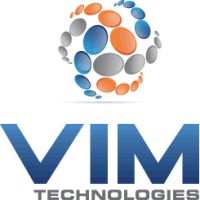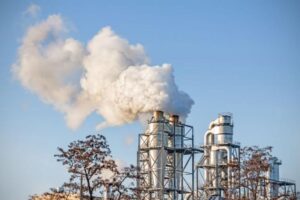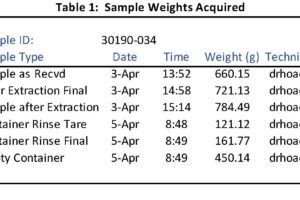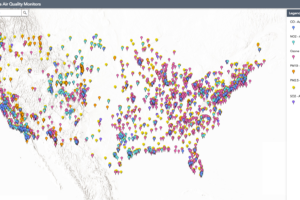The National Emission Standards for Hazardous Air Pollutants (NESHAP) for Commercial Sterilization Facilities, which was promulgated earlier this year, presents several unique challenges to affected facilities. One of these challenges is the short-term implementation of Continuous Emission Monitoring Systems (CEMS), which continuously track pollutant emissions in industrial facilities, specifically to monitor ethylene oxide (EtO) within a 2- to 3-year period based on your facility’s EtO usage and source type.
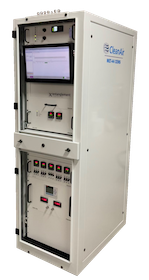
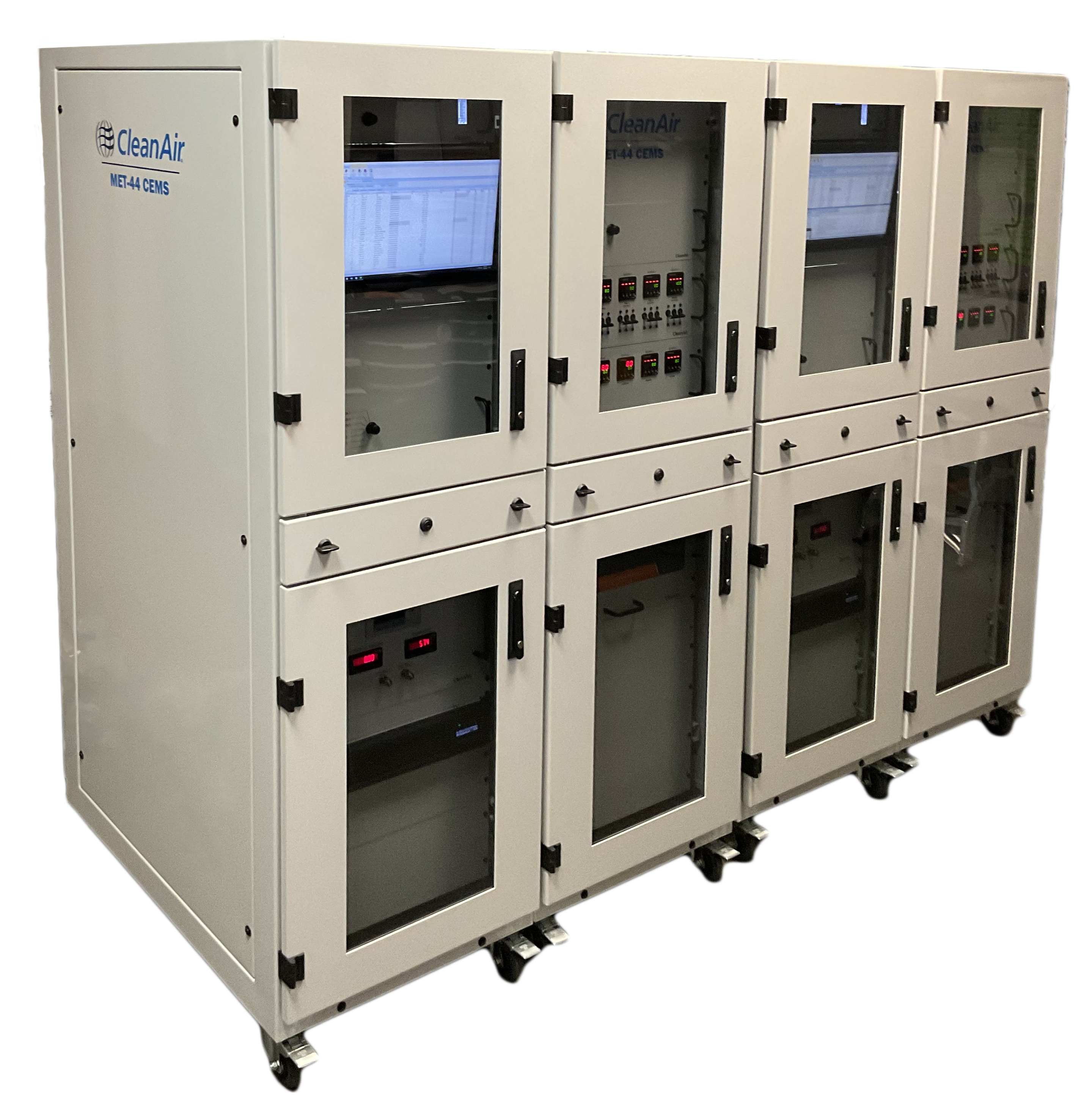
Until a few years ago not only did EtO CEMS not exist but this approach was not widely considered as an environmental compliance direction for this industry. An EtO CEMS is much more than an analyzer. In fact, the analyzer, while important, is but a single piece within a much larger puzzle. The NESHAP requires determination of EtO removal efficiency (RE) either per source type (i.e. SCV, ARV, CEV, Group 1 or Group 2) or for the entire facility (more on this in a bit). Below are a few critical aspects of a turnkey EtO CEMS:
- EtO Sampling System: Transporting a sample from source to system may seem easy. However, the challenges associated with ethylene oxide are far from trivial and CleanAir’s Best Practices address collecting samples now and into the future. The sampling system must quickly deliver a representative sample from source to system without altering its composition in any way now and well into the future.
- Flow Rate Monitoring System: Consisting of a flow rate analyzer and flow rate sampling system, this system is critical to provide you with the most accurate emission rates. Sources across sterilization facilities can wildly vary in velocity. For example, is the gas flow rate from a large abatement system the same as a small set of gas/solid reactors (dry bed scrubbers) or batch-operated scrubbers? No. If your flow rate system is not optimized per source you could end up over- or under-reporting your flow rate and subsequently your emission rate (and removal efficiency). Your compliance is reliant on much more than the EtO concentration.
- Timeshare Capabilities: CleanAir focused our initial MET-44 design & development around timeshare applications specific to inlet and outlet monitoring. Our proprietary design maximizes your timeshare capabilities by minimizing your response time and allowing you to collect MORE DATA. While timesharing is permitted by the regulation and can reduce your CEMS requirements, there are risks associated that you should be aware of before making your final decision.
- Calibration System: Performance Specifications 19 and Procedure 7 are amongst the Quality Assurance (QA) and Quality Control (QC) and operating requirements governing an EtO CEMS. A CEMS requires daily calibrations to meet QA/QC requirements and must be capable of performing special case calibrations and notifications if an event is triggered (i.e. over-span). This automated system includes additional measures to ensure your system is operational and your data is valid. Uptime will be particularly vital once you complete your performance test and any deviations from your QA/QC and monitoring plans could lead to downtime or periods out-of-control.
- Data Acquisition & Handling System (DAHS): A turnkey system must consist of a specially developed Subpart O solution for overall system control and built-in reporting capable of working through EPA’s Central Data Exchange (CDX) using the Compliance and Emissions Data Reporting Interface (CEDRI). NESHAP reporting requirements are a paradigm shift in how the industry once operated and the MET-44 DAHS from VIM Technologies has you covered.
- Ongoing Support Services: As far as puzzle pieces go, this is the piece to tie it all together. You have your CEMS – now what? Your applicable compliance date may be either April 2026 or April 2027 based on your annual EtO usage, but you also have a 180-day period to formally demonstrate your initial compliance through a relative accuracy test audit (RATA). This additional time allows you to further study your facility and learn your CEMS without rushing into this test. Upon completion of your RATA, you will be required to continuously meet all ongoing QA and reporting requirements. CleanAir and our Partners offer 24/7 support services and guarantee rapid responses to help you now and into the future.
Many facilities are still grappling with the next steps to meet the April 2026 compliance deadline due to the many changes we all learned as we read the final documentation. This decision-making process is not straightforward, primarily due to the lack of comprehensive data available for the newly regulated sources. For more than 50 years, CleanAir has assisted those in need of compliance direction.
Regulatory guidance includes an explanation of the optional site-wide emission limitation (SWEL) that allows compliance with SWEL either based on the facility EtO usage or based on emission streams. Both options can reduce the number of emissions points your facility must monitor and may also reduce your CEMS footprint. However, there are several pinch points to consider when weighing SWEL options for your facility.
- Data: The new ruling categorizes sources into SCV, ARV, Group 1, Group 2, and CEV, each with its own set of challenges. lack of data for previously unregulated sources and the lack of normal, day-to-day data for previously regulated sources.
- Operational Requirements: Unlike historical tests primarily focused on SCV or ARV emissions, the NESHAP determines compliance by reviewing the rolling 30-day average. This is no longer a discrete loading event test, and this will account for daily operational variance.
- Compliance Limits: The ruling does away with the prior alternative standards and imposes new standards on previously unregulated sources at existing facilities, highlighted in the table below.
| Source | Facility’s Annual EtO Usage | ||||
| <4 tpy | 4-20 tpy | 20-40 tpy | 40-60 tpy | >60 tpy | |
| Group 1 | 80%B | 98%A | |||
| Group 2 | 1 ppmB,C | 80%A | 98%A | ||
| CEV | 99%B | 99.9%A | |||
A April 6, 2026, compliance deadline.
B April 5, 2027, compliance deadline.
C The facility must remain under 4 tpy within all consecutive 12-month periods after April 6, 2026.
So, what are your options? You have likely determined the minimum number of emission points at your facility. The main questions surround the SWEL approaches – will this work for you, and if not, how many inlet sources will you need to monitor? There’s still time to make the best long-term decision for your facility to limit your compliance risks. At CleanAir, we routinely execute long-term investigative sampling programs to supply you with enough normal, day-to-day operating trends to begin estimating your rolling-30 emissions.
The figure below displays EtO variations (y-axis) over a 30-day operating window (x-axis) and highlights a test day’s 8-hour window relative to a month of emissions data. There’s much more to your operations than historical reports may suggest.

What will CEMS show you? In most cases you may learn that less than 0.4% of your 1-minute data points are above your most recent compliance report’s average, your rolling-30 concentrations maybe an order of magnitude lower than that same report value, and a single day does not generally have much of an impact on your rolling-30 emissions.
We’re here to help you from regulatory consulting through CEMS installations and ongoing support services, performance testing, reporting, and more. Contact us today to schedule your one-on-one consultation.


